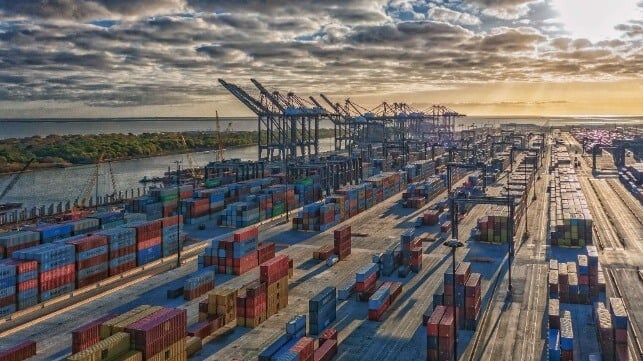
Congestion has cleared up at the twin ports of Los Angeles and Long Beach, which together make up the busiest container-terminal complex in the United States. But the slowdown hasn't gone away: Instead, the same overabundance of cargo can now be found at Houston, which is the biggest container port on the U.S. Gulf Coast.
'We currently see a lack of storage in Houston, as well as minimal chassis availability and vessel congestion at Houston area terminals,” said Paul Brashier, VP of Drayage and Intermodal for ITS Logistics, in the company's latest supply chain index report. “Houston is seeing higher inbound volumes, a chassis imbalance and terminal congestion above normal levels.'
According to Brashier, the congestion at Houston is the end result of a long cascade of cargo overflow, which began with the severe backlogs on the West Coast last year, then spread to the East Coast in mid-2021 and eventually reached the Gulf.
Reacting to the slowdowns in San Pedro Bay in early 2021, American importers began to shift cargo to eastern gateways, bringing long dwell times and vessel delays with them. When the East Coast's big ports became too busy, shippers began to send more containers to Houston instead. In January 2022, Houston saw a 27 percent rise in containerized traffic year-on-year, leading to a shortage of space. According to ITS, Houston is seeing 'higher inbound volumes, a chassis imbalance and terminal congestion above normal levels.'
Meanwhile, on the West Coast, operations are effectively back to normal: low congestion, adequate chassis availability, and plenty of room to store containers, ITS reports. At San Pedro Bay, there were just 27 vessels at anchor or loitering on Monday, down from 104 at the peak of the port overload last year.
Import volumes at LA/Long Beach were down 18 percent year-on-year last month, reflecting reduced demand from consumers and retailers. The drop gives the key import hubs a chance to catch up; it is also giving shippers a break on pricing. Asia-USWC spot rates have fallen to about $2,500 per FEU, and Hackett Associates predicts that the cost will be as low as $1,500 per FEU by January - returning to familiar territory for the industry.